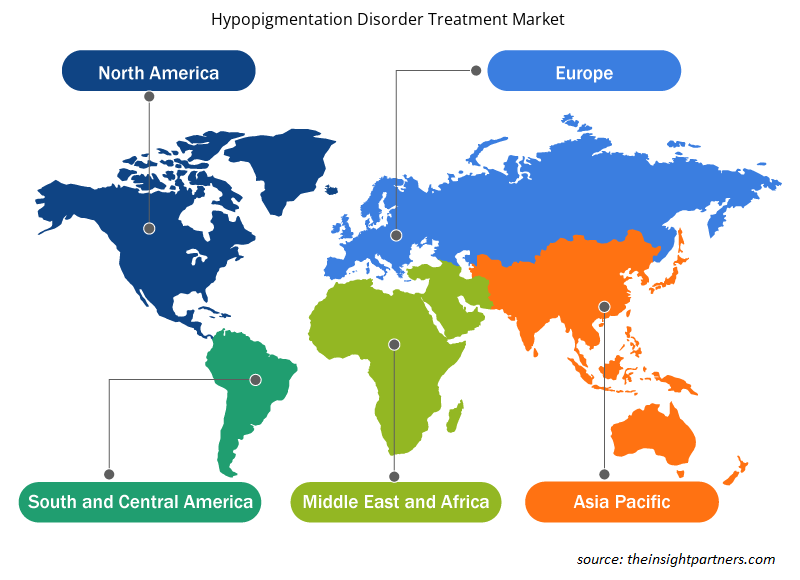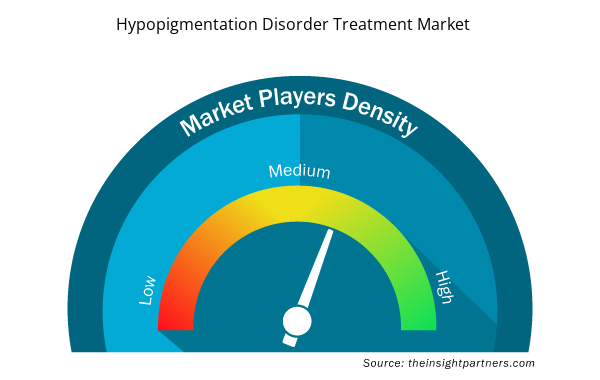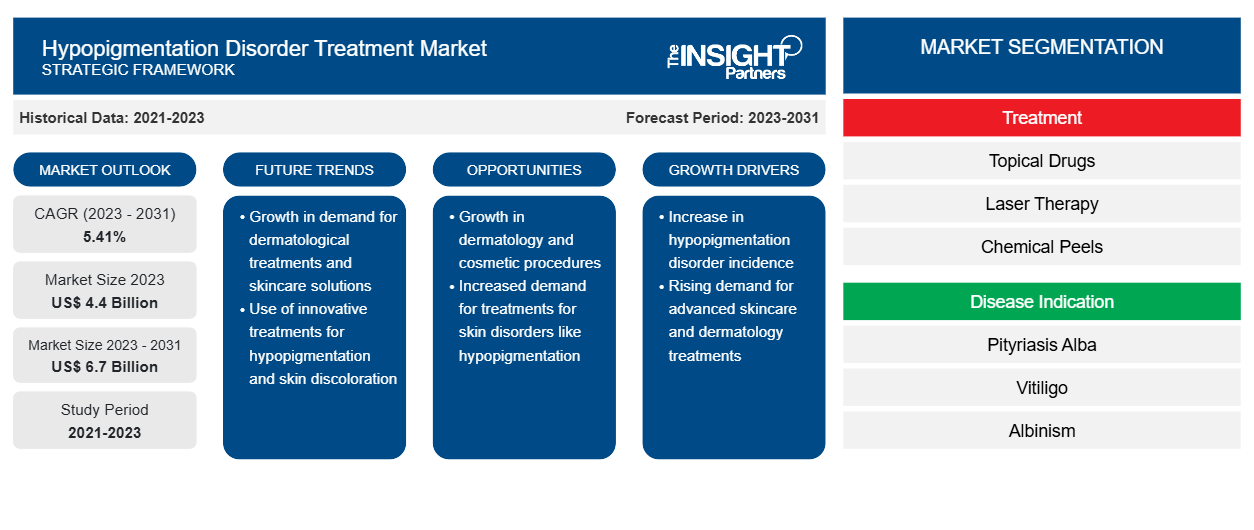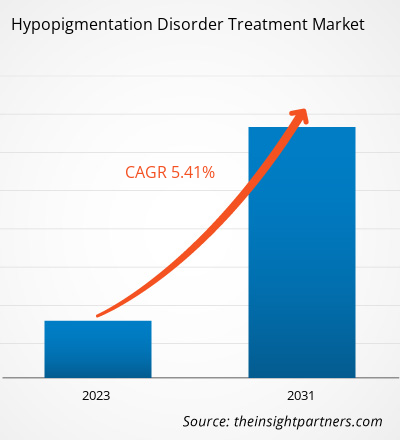[研究报告] 色素减退症治疗市场价值预计将从 2023 年的 44 亿美元增长到 2031 年的 67 亿美元;预计 2023 年至 2031 年市场复合年增长率为 5.41%。
市场洞察和分析师观点:
色素减退症可能进一步发展为脱色症。这是一种皮肤色素水平低于最佳水平的疾病,不同于因色素完全去除而发生的脱色症。推动色素减退症治疗市场增长的主要因素是对色素减退症的认识不断提高、美容治疗的技术进步以及老龄化人口的持续激增。此外,与色素减退症相关的疾病(如白化病、色素减退后和白癜风)的发病率不断增加,预计将在未来几年推动色素减退症治疗市场的发展。此外,消费者在皮肤健康方面的支出不断增加以及与治疗相关的认识预计将在不久的将来使该市场受益。天然和植物成分的引入预计将在未来几年带来色素减退症治疗市场的趋势,因为这些产品迄今为止在满足全球对药妆产品的需求方面至关重要。另一方面,美容治疗和手术的成本限制了市场的增长。
根据国家临床试验 (NCT) 注册中心的数据,2020 年 6 月,Incyte Corporation 对芦可替尼进行了 II 期临床试验,以评估其在美国受试者中治疗白癜风的安全性和有效性。因此,与色素减退症相关的临床试验数量不断增加是推动市场发展的另一个关键因素。
增长动力和挑战:
色素减退症患病率上升推动市场增长
白色糠疹、白癜风、白化病和炎症后色素减退是与色素减退症相关的主要疾病适应症。白癜风是世界各地常见的疾病适应症。根据 2023 年 12 月发表在《皮肤病学实用与概念》上的一项研究,白癜风是一种影响男女的常见皮肤病。尽管如此,它在女性中更为常见,超过 60% 的患者在 30 岁之前发病。白癜风发病率和患病率的上升预计将进一步促进对色素减退治疗的需求不断增长。
根据 2023 年 3 月发表在《扎加齐格大学医学杂志》上的一篇文章,色素减退症是儿科常见的一组皮肤病;色素减退症的患病率因国家而异,从 3.6% 到 9.9% 不等。此外,微创手术的出现和采用、更短的住院时间以及与手术相关的疼痛和并发症更少,是微创手术日益普及的关键。根据美国整形外科医师协会 (ASPS) 在 2021 年的数据,自 2000 年以来,美国进行的微创美容手术数量激增了近 200%。因此,对微创美容手术的日益增长的偏好进一步推动了色素减退症治疗市场的增长。另一方面,光疗对白癜风和白化病等疾病适应症的成本很高。此外,治疗白癜风的手术费用非常昂贵。因此,高昂的治疗成本限制了其采用,从而限制了色素减退症治疗市场的增长。
定制此报告以满足您的需求
您可以免费定制任何报告,包括本报告的部分内容、国家级分析、Excel 数据包,以及为初创企业和大学提供优惠和折扣
- 获取此报告的关键市场趋势。这个免费样品将包括数据分析,从市场趋势到估计和预测。
报告细分和范围:
通过考虑以下部分,我们对色素减退症治疗市场进行了分析:治疗、疾病指征和最终用户。色素减退症治疗市场报告的地理范围包括北美洲(美国、加拿大和墨西哥)、欧洲(英国、德国、法国、意大利、西班牙和欧洲其他地区)、亚太地区(中国、日本、印度、澳大利亚、韩国和亚太其他地区)、中东和非洲(阿联酋、沙特阿拉伯、南非和中东和非洲其他地区)以及南美洲和中美洲(巴西、阿根廷和南美洲和中美洲其他地区)。
节段分析:
基于治疗的见解
根据治疗方法,市场细分为外用药物、激光治疗、化学换肤、微晶磨皮、光疗等。外用药物在 2023 年占据色素减退症治疗市场的最大份额,预计在 2023-2031 年期间将实现最高复合年增长率。
基于疾病指征的见解
根据疾病指征,色素减退症治疗市场细分为白色糠疹、白化病、白癜风、炎症后色素减退等。到 2023 年,白癜风细分市场占有相当大的市场份额,预计在 2023-2031 年期间将实现最高复合年增长率。
基于最终用户的洞察
就最终用户而言,市场分为美容诊所、皮肤科中心和医院。美容诊所部分在 2023 年占据了色素减退症治疗市场的最大份额;预计在 2023-2031 年期间,该部分将实现市场最高复合年增长率。
色素减退症治疗市场区域洞察
Insight Partners 的分析师已详尽解释了预测期内影响色素减退症治疗市场的区域趋势和因素。本节还讨论了北美、欧洲、亚太地区、中东和非洲以及南美和中美洲的色素减退症治疗市场细分和地理分布。

- 获取色素减退症治疗市场的区域特定数据
色素减退症治疗市场报告范围
| 报告属性 | 细节 |
|---|---|
| 2023 年的市场规模 | 44亿美元 |
| 2031 年市场规模 | 67亿美元 |
| 全球复合年增长率(2023 - 2031) | 5.41% |
| 史料 | 2021-2023 |
| 预测期 | 2023-2031 |
| 涵盖的领域 | 按治疗
|
| 覆盖地区和国家 | 北美
|
| 市场领导者和主要公司简介 |
|
色素减退症治疗市场参与者密度:了解其对业务动态的影响
色素减退症治疗市场正在快速增长,这得益于终端用户需求的不断增长,而这些需求又源于消费者偏好的不断变化、技术进步以及对产品优势的认识不断提高等因素。随着需求的增加,企业正在扩大其产品范围,进行创新以满足消费者的需求,并利用新兴趋势,从而进一步推动市场增长。
市场参与者密度是指在特定市场或行业内运营的企业或公司的分布情况。它表明在给定市场空间中,相对于其规模或总市场价值,有多少竞争对手(市场参与者)存在。
在色素减退症治疗市场运营的主要公司有:
- 艾尔建
- 修丽可
- 皮埃尔法伯
- Obagi 药妆品有限公司
- 因塞特
免责声明:上面列出的公司没有按照任何特定顺序排列。

- 了解色素减退症治疗市场的主要参与者概况
区域分析:
2023 年,北美占据色素减退症治疗市场的最大份额,预计在预测期内仍将保持其主导地位(就份额而言)。美国在该地区(占最大份额)和全球市场中占据主导地位。完善的医疗基础设施、人们对皮肤健康的意识不断提高、与色素减退症相关的疾病患病率不断上升,以及为炎症后色素沉着患者提供有吸引力的治疗选择的公司大量存在,这些都是推动北美市场增长的值得注意的因素。此外,亚洲人对美容标准的不断提高、大量公司进入市场以及老牌参与者的持续增长,都是推动亚太地区色素减退症治疗市场规模扩大的关键因素。
竞争格局和重点公司:
色素减退症治疗市场预测可以帮助该市场的利益相关者规划其增长战略。Allergan、SkinCeuticals、Pierre Fabre Group、Incyte Corporation、Episciences Inc.、Phio Pharmaceuticals、Obagi Cosmeceuticals LLC、Alvogen、Bella Aurora、AbbVie 是色素减退症治疗市场报告中介绍的几家主要公司。这些公司专注于扩大其产品供应,以满足全球日益增长的消费者需求。他们的全球业务使他们能够为众多客户提供服务。
- 历史分析(2 年)、基准年、预测(7 年)及复合年增长率
- PEST 和 SWOT 分析
- 市场规模价值/数量 - 全球、区域、国家
- 行业和竞争格局
- Excel 数据集


- Smart Water Metering Market
- Industrial Inkjet Printers Market
- Micro-Surgical Robot Market
- Intraoperative Neuromonitoring Market
- Underwater Connector Market
- Digital Language Learning Market
- Ketogenic Diet Market
- Influenza Vaccines Market
- Small Internal Combustion Engine Market
- Terahertz Technology Market

Report Coverage
Revenue forecast, Company Analysis, Industry landscape, Growth factors, and Trends

Segment Covered
This text is related
to segments covered.

Regional Scope
North America, Europe, Asia Pacific, Middle East & Africa, South & Central America

Country Scope
This text is related
to country scope.
常见问题
The hypopigmentation disorder treatment market is expected to be valued at US$ 6,750.10 million in 2030.
Based on disease indication type, the hypopigmentation disorder treatment market is segmented into pityriasis alba, vitiligo, albinism, PIH and others. Vitiligo is anticipated to gain significant traction in the upcoming years. Rising prevalence of vitiligo globally and number of patients suffering from this disease is expected to drive the market growth.
The hypopigmentation disorder treatment market was valued at US$ 4,428.57 million in 2023.
The hypopigmentation disorder treatment market has major market players, including Allergan, SkinCeuticals, Pierre Fabre, EpiSciences, Incyte, STRATA Skin Sciences, AVITA Medical, Galderma S.A.
Based on type, the topical drugs segment in the hypopigmentation disorder treatment market is expected to record the fastest CAGR from 2023 to 2031. Factor such as ease of convenience of taking these drugs, increasing number of topical drugs to treat hypopigmentary scars.
Growing prevalence of skin diseases and rising demand for affordable and effective treatment solution globally. In 2023, the World Health Organization released estimates that skin diseases impacted over 1.8 million people worldwide. However, the stringent regulatory processes and high cost of hypopigmentation disorder treatment is expected to hinder the growth of the hypopigmentation disorder treatment market.
Hypopigmentation disorders are skin conditions caused due to loss in skin color. These disorders include vitiligo, albinism, and pityriasis alba among other disorders. Treatment depends on the severity of specific disease conditions.
Trends and growth analysis reports related to Life Sciences : READ MORE..
The List of Companies - Hypopigmentation Disorder Treatment Market
- Allergan
- SkinCeuticals
- Pierre Fabre
- Obagi Cosmeceuticals LLC
- Incyte
- Galderma S.A.
- TeVido BioDevices, Inc.
- STRATA Skin Sciences
- AVITA Medical
- Courage + Khazaka electronic GmbH
The Insight Partners performs research in 4 major stages: Data Collection & Secondary Research, Primary Research, Data Analysis and Data Triangulation & Final Review.
- Data Collection and Secondary Research:
As a market research and consulting firm operating from a decade, we have published and advised several client across the globe. First step for any study will start with an assessment of currently available data and insights from existing reports. Further, historical and current market information is collected from Investor Presentations, Annual Reports, SEC Filings, etc., and other information related to company’s performance and market positioning are gathered from Paid Databases (Factiva, Hoovers, and Reuters) and various other publications available in public domain.
Several associations trade associates, technical forums, institutes, societies and organization are accessed to gain technical as well as market related insights through their publications such as research papers, blogs and press releases related to the studies are referred to get cues about the market. Further, white papers, journals, magazines, and other news articles published in last 3 years are scrutinized and analyzed to understand the current market trends.
- Primary Research:
The primarily interview analysis comprise of data obtained from industry participants interview and answers to survey questions gathered by in-house primary team.
For primary research, interviews are conducted with industry experts/CEOs/Marketing Managers/VPs/Subject Matter Experts from both demand and supply side to get a 360-degree view of the market. The primary team conducts several interviews based on the complexity of the markets to understand the various market trends and dynamics which makes research more credible and precise.
A typical research interview fulfils the following functions:
- Provides first-hand information on the market size, market trends, growth trends, competitive landscape, and outlook
- Validates and strengthens in-house secondary research findings
- Develops the analysis team’s expertise and market understanding
Primary research involves email interactions and telephone interviews for each market, category, segment, and sub-segment across geographies. The participants who typically take part in such a process include, but are not limited to:
- Industry participants: VPs, business development managers, market intelligence managers and national sales managers
- Outside experts: Valuation experts, research analysts and key opinion leaders specializing in the electronics and semiconductor industry.
Below is the breakup of our primary respondents by company, designation, and region:

Once we receive the confirmation from primary research sources or primary respondents, we finalize the base year market estimation and forecast the data as per the macroeconomic and microeconomic factors assessed during data collection.
- Data Analysis:
Once data is validated through both secondary as well as primary respondents, we finalize the market estimations by hypothesis formulation and factor analysis at regional and country level.
- Macro-Economic Factor Analysis:
We analyse macroeconomic indicators such the gross domestic product (GDP), increase in the demand for goods and services across industries, technological advancement, regional economic growth, governmental policies, the influence of COVID-19, PEST analysis, and other aspects. This analysis aids in setting benchmarks for various nations/regions and approximating market splits. Additionally, the general trend of the aforementioned components aid in determining the market's development possibilities.
- Country Level Data:
Various factors that are especially aligned to the country are taken into account to determine the market size for a certain area and country, including the presence of vendors, such as headquarters and offices, the country's GDP, demand patterns, and industry growth. To comprehend the market dynamics for the nation, a number of growth variables, inhibitors, application areas, and current market trends are researched. The aforementioned elements aid in determining the country's overall market's growth potential.
- Company Profile:
The “Table of Contents” is formulated by listing and analyzing more than 25 - 30 companies operating in the market ecosystem across geographies. However, we profile only 10 companies as a standard practice in our syndicate reports. These 10 companies comprise leading, emerging, and regional players. Nonetheless, our analysis is not restricted to the 10 listed companies, we also analyze other companies present in the market to develop a holistic view and understand the prevailing trends. The “Company Profiles” section in the report covers key facts, business description, products & services, financial information, SWOT analysis, and key developments. The financial information presented is extracted from the annual reports and official documents of the publicly listed companies. Upon collecting the information for the sections of respective companies, we verify them via various primary sources and then compile the data in respective company profiles. The company level information helps us in deriving the base number as well as in forecasting the market size.
- Developing Base Number:
Aggregation of sales statistics (2020-2022) and macro-economic factor, and other secondary and primary research insights are utilized to arrive at base number and related market shares for 2022. The data gaps are identified in this step and relevant market data is analyzed, collected from paid primary interviews or databases. On finalizing the base year market size, forecasts are developed on the basis of macro-economic, industry and market growth factors and company level analysis.
- Data Triangulation and Final Review:
The market findings and base year market size calculations are validated from supply as well as demand side. Demand side validations are based on macro-economic factor analysis and benchmarks for respective regions and countries. In case of supply side validations, revenues of major companies are estimated (in case not available) based on industry benchmark, approximate number of employees, product portfolio, and primary interviews revenues are gathered. Further revenue from target product/service segment is assessed to avoid overshooting of market statistics. In case of heavy deviations between supply and demand side values, all thes steps are repeated to achieve synchronization.
We follow an iterative model, wherein we share our research findings with Subject Matter Experts (SME’s) and Key Opinion Leaders (KOLs) until consensus view of the market is not formulated – this model negates any drastic deviation in the opinions of experts. Only validated and universally acceptable research findings are quoted in our reports.
We have important check points that we use to validate our research findings – which we call – data triangulation, where we validate the information, we generate from secondary sources with primary interviews and then we re-validate with our internal data bases and Subject matter experts. This comprehensive model enables us to deliver high quality, reliable data in shortest possible time.


 获取此报告的免费样本
获取此报告的免费样本